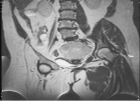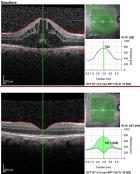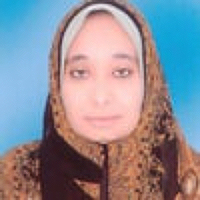Table of Contents
Clinical and biological profiles of older adults aged 50 and over compared to those under 50 in people living with HIV attending Kinshasa University Teaching Hospital (DR Congo)
Published on: 28th October, 2021
OCLC Number/Unique Identifier: 9322406717
Background: The survival of people living with HIV (PLWHIVs) is increased and Health systems will have to deal with the early-aging-associated medical conditions.Objective: The objective of this study is to compare the clinical and biological profiles of PLWHIVs aged 50 and over and those aged less than 50 years.Material and methods: This study conducted at Kinshasa University Teaching Hospital (KUTH) covers 6 years. The clinical and biological characteristics of PLWHIVs aged 50 and over were compared with those under 50. Statistical analysis used the means ± SD, the calculation of frequencies, Student’s t-test and Chi-square.Results: PLWHIVs aged 50 or over represented 35.1%. Their average age was 58.0 ± 4.8 years. Women predominate among those under 50 and men among those 50 and over. Married people were more numerous (54% among those under 50). There were more unemployed (50% of PLHIV under 50). Patients 50 years and older were significantly classified as WHO stage 4 with a high frequency of history of tuberculosis, genital herpes, high blood pressure, smoking, vomiting, hepatomegaly, moderate elevation of diastolic blood pressure (DBP) and sytolic blood pressure (SBP), tuberculosis and anemia.Those under 50 had a significantly increased frequency of shingles, hepatitis B-hepatitis C, headaches and more survivals. The mean of Hb, HDL-C, and CD4s+ were significantly lower in patients 50 years and older, and urea, LDL-c, and ALAT levels were significantly higher. Conclusion: The average age was higher from 50 years old. These PLWHIVs were more frequently in WHO stage 4 with more common TB and anemia. Their Hb, HDL-C, and CD4s+ levels were lower while their urea, LDL-C and ALAT levels were significantly elevated.
Contemplating SARS-CoV-2 infectivity with respect to ABO blood groups
Published on: 26th October, 2021
OCLC Number/Unique Identifier: 9322470952
COVID-19 is a disease that is caused by SARS-CoV-2 and very speedily spreading all over the world. The blood group’s effect on COVID-19 is not clear. The main aim of this article is to determine the relationship between sensitivity of COVID-19 and ABO blood group. For this study we have observed that the individuals with blood group A are at higher risk of getting COVID-19 because they contain the higher concentration of Angiotensin-converting enzyme-2 that provide the site to virus for entry. But in other blood groups the natural Anti A antibodies block the interaction between host receptor and virus and disturb their interaction. Certain studies show that the infectivity and mortality rate in covid patients is not affected by AB blood group system. But according to research, increased ventilator usage, ICU stay was observed in critically ill patients with AB blood group than of other blood groups. O blood group has proved to be protective against SARS-CoV-2 due to the presence of both anti-A and anti-B antibodies as they prevent the binding of the spike protein S of the virus with the ACE2 receptors which are present on the surface of cells. Moreover, furin also plays a major role in penetration of virus in the host cells. Furin is required for the activation of the spike protein S of the virus and due to the low efficiency of furin cleavage in blood group O it is protected from SARS-CoV-2 and other chronic diseases. Mortality rate of covid 19 depends upon the environmental factors, number of people living in the area and also some economic factors. The different strains of COVID-19 effect the different people differently and as the time passes the strain of COVID-19 has changed and thus according to this the mortality rate of different provinces and areas varies due to environmental factors. Pregnant women have no any kind of transportation of covid to their fetuses but mostly patients of blood group A are being affected by COVID-19 and hence their fetuses are somehow effected. And those pregnant women having blood group O does not have any risk of COVID-19 of severe stages.
SARS-CoV-2 infection-associated detrimental effects on the various human organs
Published on: 26th October, 2021
OCLC Number/Unique Identifier: 9322409760
The SARS-Cov-2 virus was firstly identified in Wuhan, China and caused catastrophic destruction all over the world. COVID-19 virus primarily effects lungs of its hosts and impairs it in number of ways. It can also damage multiple organs like Heart, kidney, endocrine glands, skin, brain and several others. Kidneys are also damaged to a great extent. In Heart it can cause acute coronary syndrome, Heart failure, Myocardial infarction. SARS-CoV-2 effect brain especially psychologically. It also causes serious lymphocyte apoptosis. It also neutralizes human spleen and lymph nodes. SARS-CoC-2 can be harmful for those having already liver diseases. Similarly, SARS-CoV-2 has a direct impact on endocrine glands. It is responsible for the various injurious changes in hormones, causes various diseases like acute pancreatitis, decrease in GH, hypoparathyroidism etc. and lead to cause tissues damage in glands. It also some minor effects on nose, and respiratory pathways. It also has some minor effects on eyes and ears whereas it causes several devastations in GIT.
Viral overload of COVID-19 pandemics: Overweight people a soft target to get an infection
Published on: 7th September, 2021
OCLC Number/Unique Identifier: 9227637980
A growing figure of data proposes that outcomes with Coronavirus Disease 2019 are worse in those suffering from obesity and that a significant proportion of those requiring intensive care suffers from overweight or obesity [1].
Novel Coronavirus Disease (COVID-19): An extensive study on evolution, global health, drug targets and vaccines
Published on: 5th July, 2021
OCLC Number/Unique Identifier: 9272394662
The Coronavirus disease-2019 (COVID-19), has become a worldwide pandemic and the scientific communities are struggling to find out the ultimate treatment strategies against this lethal virus, Severe Acute Respiratory Syndrome Coronavirus–2 (SARS-CoV-2). Presently, there is no potential chemically proven antiviral therapy available in the market which can effectively combat the infection caused by this deadly virus. Few vaccines are already developed but it is not clear to the scientific community how much efficient they are to combat SARS-CoV-2. Mode of transmission and symptoms of the disease are two important factors in this regard. Rapid diagnosis of the COVID-19 is very much important to stop its spreading. In this scenario, a complete study starting from symptoms of the disease to vaccine development including various SARS-CoV-2 detection techniques is very much required. In this review article, we have made a partial analysis on the origin, virology, global health, detection techniques, replication pathways, doses, mode of actions of probable drugs, and vaccine development for SARS-CoV-2.

If you are already a member of our network and need to keep track of any developments regarding a question you have already submitted, click "take me to my Query."

















































































































































